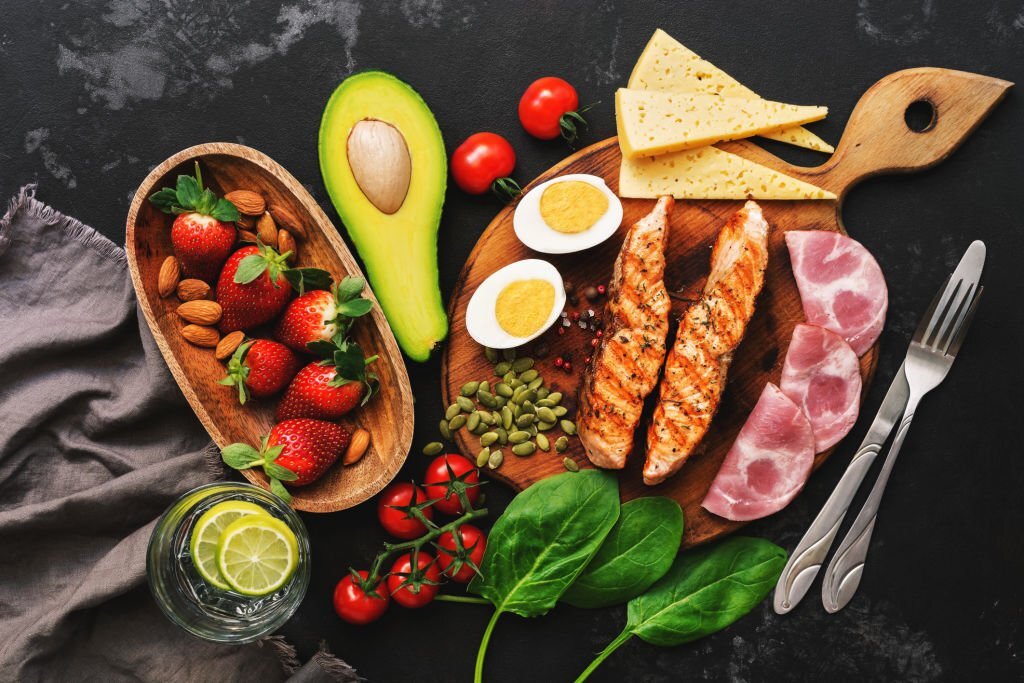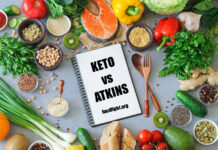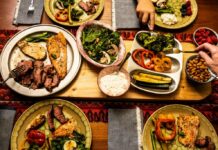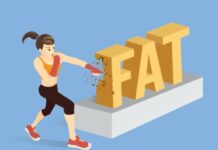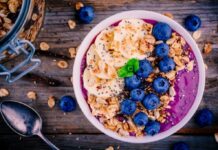Are you looking to take control of your health and start a keto diet? If so, you've come to the right place!
In this article, we'll provide an example of how to start a keto diet correctly and which plan or menu is best for you. You'll learn all about the basics of a keto diet, from understanding it and setting goals to creating your own plan.
We'll also discuss common challenges and solutions, as well as provide some delicious recipes.
So let's get started on your journey towards better health today!
Key Takeaways
- A well-formulated keto diet includes whole food sources like fatty fish, meat, eggs, nuts & seeds, high fat dairy products, non-starchy vegetables, and low carb fruits like berries.
- Personalizing a keto diet plan by finding the right balance of macronutrients and including a variety of nutrient-rich foods is important for a balanced and healthy diet.
- Overcoming challenges such as the Keto Flu, eating out, and social pressure can be addressed by staying hydrated, increasing healthy fat intake, practicing self-care, and educating family and friends about the benefits of the keto diet.
- Monitoring progress by tracking food intake with a food journal or app can help stay motivated and take note of how the body is responding to the diet change.
Keto Diet Plan
Starting a keto diet doesn't have to be overwhelming. Here's an example of a 7-day meal plan that provides breakfast, lunch, dinner, and snack ideas to get you started.
All the meals are healthy, nutritious and give your body all the nutrients it needs while still providing delicious flavors. Plus, with this plan, you'll know exactly what to eat each day so there's no guesswork involved!
So grab your grocery list and let's get cooking!
A Sample 7-Day Keto Diet Meal Plan
Jumpstarting your keto diet can be easy with this 7-day meal plan!
With the right combination of meals, you'll have no trouble getting started on your journey to a healthier lifestyle.
This plan provides all the tools and guidance you need for a successful first week on the keto diet.
It includes breakfast, lunch, dinner, and snack ideas that will leave you feeling satisfied without compromising your goal of optimal health.
This meal plan is designed to help you reach your macronutrient goals while also providing delicious recipes that are easy to make.
Each day consists of low-carbohydrate items like eggs, meats, cheeses, nuts, seeds, and vegetables that will keep your body in ketosis while providing adequate nutrition.
Additionally, each meal contains healthy fats like olive oil or avocado oil, which provide essential vitamins and minerals for overall well-being.
With this simple but effective 7-day menu, you can begin your journey towards a healthier lifestyle with confidence!
And from there, it's just a matter of finding breakfast, lunch, dinner, and snack ideas that fit into the keto diet guidelines.
Breakfast, Lunch, Dinner, and Snack Ideas
Begin your journey to better health with delicious breakfast, lunch, dinner, and snack ideas that will help you reach your keto goals.
- You can start by having a high-fat breakfast like eggs cooked in butter or ghee, topped with cheese and served with bacon or sausage.
- Lunch can be a salad topped with grilled chicken or salmon and some avocado slices, while dinner could be ground beef stir fry served over zucchini noodles.
- For snacks throughout the day, try nuts, seeds, or celery sticks spread with cream cheese or almond butter.
All of these meals are packed full of good fats and protein to keep you feeling satiated while following a keto diet plan.
These meal options are just the tip of the iceberg when it comes to great tasting low-carb meals; there are plenty more out there for you to explore!
Here's another example of a simple 7-day keto diet meal plan:
Day 1:
- Breakfast: Scrambled eggs with spinach and feta cheese
- Lunch: Grilled chicken salad with olive oil dressing
- Dinner: Baked salmon with a side of asparagus
- Snack: A handful of almonds
Day 2:
- Breakfast: Avocado and bacon omelet
- Lunch: Tuna salad with celery and tomato atop a bed of greens
- Dinner: Beef stir-fry cooked in coconut oil with vegetables
- Snack: Celery with cream cheese
Day 3:
- Breakfast: Full-fat Greek yogurt topped with crushed pecans
- Lunch: Beef and vegetable soup
- Dinner: Grilled shrimp served with a lemon butter sauce and a side of zucchini noodles
- Snack: A handful of walnuts
Day 4:
- Breakfast: Smoothie made with almond milk, spinach, and peanut butter
- Lunch: Chicken stuffed with cream cheese and wrapped in bacon
- Dinner: Pork chops with green beans sautéed in coconut oil
- Snack: Sliced cucumber with ranch dressing
Day 5:
- Breakfast: Omelet with mushrooms, broccoli, and cheddar cheese
- Lunch: Caesar salad with grilled chicken
- Dinner: Pan-seared cod with a side of broccoli and cheese
- Snack: A handful of macadamia nuts
Day 6:
- Breakfast: Scrambled eggs with jalapenos, cheese, and tomatoes
- Lunch: Spinach salad with hard-boiled eggs, turkey, avocado, and blue cheese
- Dinner: Grilled chicken served with eggplant and salsa
- Snack: Half an avocado
Day 7:
- Breakfast: Fried eggs with bacon and a side of greens
- Lunch: Burger with salsa, cheese, and guacamole
- Dinner: Steak served with a side of cauliflower mash
- Snack: Celery with almond butter spread
Please note that these percentages of a rough estimate of the macronutrient breakdown for each day can vary based on portion sizes and specific ingredients used.
It's always a good idea to use a nutrition tracking app to get accurate information based on your specific meals.
With a little bit of creativity and experimentation, you'll find some amazing recipes that make following a keto diet enjoyable and satisfying.
From this point forward on your journey to better health, you'll need to have an understanding of which foods work best within your keto diet plan – such as healthy proteins, fats, vegetables, and fruits – so let's take a look at those now!
Keto Diet Foods
When following a keto diet, it's important to know what foods to eat and avoid. Eating the right foods will ensure you're getting the proper nutrients while keeping your carb intake low.
To get started, focus on eating:
- Fatty fish such as salmon, tuna, and mackerel
- Eggs
- Nuts and seeds
- Meat, poultry, and pork
- Dairy products like cheese and yogurt
- Healthy oils like olive oil and avocado oil
- Non-starchy vegetables such as broccoli and cauliflower
- Low-carb fruits like berries
Avoid:
- Processed foods
- Grains
- Legumes
- High-sugar fruits
- Sugary sodas or treats with added sugar
Following these guidelines is a great way to stay on track with your keto diet plan!
Foods to Eat on a Keto Diet
To start your keto journey, you'll want to fill your plate with healthy fats, low-carb veggies and moderate amounts of protein.
This means including foods such as fatty fish like tuna and salmon, lean proteins like chicken and eggs, nuts and seeds, avocados and olives, low carb vegetables like spinach and broccoli, cheese and heavy cream.
| Keto Foods | Quantity |
|---|---|
| Fatty Fish (Tuna/Salmon) | 2-3x per week |
| Lean Proteins (Chicken/Eggs) | 3-4x per day |
| Nuts & Seeds (Almonds/Walnuts) | 2x per day |
| Avocados & Olives | 1-2x per day |
| Low Carb Vegetables (Spinach/Broccoli) | Unlimited Amounts Per Day |
Creating a meal plan or even following a monthly keto diet example can be helpful in ensuring you are getting the right balance of nutrients.
You can also find plenty of ideas online for everyday recipes that will help you stay within the limits of a keto diet.
By following these guidelines for choosing foods to eat on a keto diet, you should have no problem creating delicious meals while sticking to your macros.
Transitioning into the next section about ‘Foods to Avoid on Keto Diet' without writing ‘step', it is important to know which foods are not allowed when eating the keto way.
Foods to Avoid on a Keto Diet
You'll want to avoid certain foods while on the keto diet in order to stay within your macros and achieve your desired results. Here's a list of foods to avoid:
- Grains like wheat, corn, rice, and cereal.
- Sugary foods such as cakes, candy, and ice cream.
- Legumes including beans, lentils, peas, and peanuts.
It's important to remember that avoiding these foods can help you reach your goals faster when following the keto diet.
Eating a balanced mix of proteins and fats will help maintain your energy levels while also keeping hunger at bay.
By reducing carb intake and focusing on nutrient-dense foods like vegetables and healthy fats, you'll be able to create an effective meal plan that works for you.
With this approach, it's possible to enjoy the benefits of a keto diet without feeling deprived or restricted.
From here, you can start creating your own personalized version of the keto diet plan that fits into your lifestyle and helps you reach your health goals quickly and sustainably.
Creating Your Own Keto Diet Plan
Creating your own keto diet plan can be an exciting and rewarding process. Start by researching tips for personalizing your diet, such as finding the right balance of macronutrients for your goals.
Make sure to include a variety of nutrient-rich foods in order to maintain a balanced and healthy diet that works for you.
With careful planning, you can create a meal plan that fits into your lifestyle and helps you achieve your goals.
Tips for Personalizing Your Keto Diet
Creating your own keto diet plan can be highly rewarding. Studies show that over 70% of people who follow a personalized meal plan are more likely to stick with it and achieve their goals.
To customize your keto diet, consider the following tips:
| Proteins | Fats | Carbohydrates |
|---|---|---|
| Salmon | Avocado Oil | Spinach |
| Chicken Breast | Coconut Oil | Zucchini |
| Tuna | Olive Oil | Broccoli |
Focus on getting enough protein from lean sources such as fish, poultry and tofu. Healthy fats should make up about 30-35% of your daily caloric intake; try avocado oil, coconut oil and olive oil for a balanced fat profile.
Carbs should comprise the remainder of your macronutrient composition but should primarily come from high-fiber veggies like spinach, zucchini and broccoli.
By personalizing your diet to include these nutrient-dense foods, you'll be well on your way to achieving a healthy lifestyle!
How to Maintain a Balanced Diet
To maintain a balanced diet, you need to learn how to incorporate nutritious proteins, healthy fats, and fiber-rich carbs into your meals.
A keto diet is a great way to do this as it involves eating fewer carbohydrates – about 5% of total daily calories, increasing fat intake – up to 75% of total daily calories, and eating moderate amounts of protein – up to 25% of total daily calories.
Managing portion sizes is also important, limiting calorie consumption if necessary.
When following a keto diet, it's important to track the types and amount of food you're eating so that you can make sure you're getting all essential nutrients from different food sources.
Additionally, be sure to get enough fluids throughout the day as dehydration can quickly occur when reducing carb intake significantly.
Finally, don't forget to add physical activity into your routine; regular exercise helps burn fat while increasing energy levels and overall health benefits!
With proper planning and guidance, maintaining a balanced keto diet is achievable for everyone.
Common Challenges and Solutions
Understanding the Keto Flu and overcoming common challenges are key steps to follow when beginning a keto diet.
You may encounter uncomfortable side effects such as lightheadedness, nausea, and headaches during the transition period known as the “Keto Flu”.
To help ease this transition period, it's important to stay hydrated by drinking plenty of water and electrolyte drinks.
In addition, increasing your intake of healthy fats like olive oil and avocado can help you feel more satisfied quicker.
Lastly, don't forget to take a multivitamin supplement daily as you adjust to your new eating habits.
By following these tips, you can make your keto journey easier and more enjoyable.
Understanding the Keto Flu
You may experience the Keto Flu – a common side effect of transitioning to a keto diet – when your body is adjusting to burning fat instead of carbohydrates for energy. This adjustment period can be uncomfortable, with symptoms including fatigue, headaches, nausea, or dizziness.
While these symptoms usually improve after several days or weeks, there are some things you can do to ease their effects and make the transition smoother.
By following an electrolyte-rich diet and drinking plenty of water during this transition period, you can help your body adjust more quickly and reduce the intensity of the Keto Flu's effects.
Additionally, adding intermittent fasting into your routine can help you get used to burning fat instead of carbs for fuel while providing an array of additional health benefits.
With these tips in mind, you'll be well on your way to overcoming any common challenges that come with starting a keto diet!
Tips to Overcome Common Challenges
Starting a new way of eating can be challenging, but with some foresight and planning you'll be able to get over the hump quickly.
As they say, slow and steady wins the race! To help make this transition easier, here are some helpful tips to overcome common challenges when starting a keto diet:
| Challenges | Tips |
|---|---|
| Eating Out | Make sure to ask about ingredients and order accordingly |
| Cravings for Sweets or Carbs | Try snacking on healthy fats like nuts or olives to satisfy cravings while still staying in ketosis. Also consider supplementing with exogenous ketones if needed. |
| Social Pressure/Judgement from Friends & Family | Educate your family and friends about the benefits of a keto diet so that they understand why you are making this lifestyle change. Be confident in your decision and don't let peer pressure sway you from achieving success! |
| Lack of Motivation/Feeling Depleted | Take time for yourself each day to practice self-care like meditation, yoga, journaling or any other activity that brings you joy. This will help keep stress levels low, which is important for maintaining motivation during the transition period. Additionally, it may help to find an accountability partner who can help provide encouragement when needed. |
By following these tips, you can successfully overcome common challenges associated with starting a keto diet.
With dedication and perseverance comes success – stay motivated and enjoy the journey!
With that being said, let's move into finding delicious recipes that fit within this new way of life.
Keto Diet Recipes
If you're just starting out on a keto diet, you may be wondering what kind of recipes to make.
Fortunately, there are plenty of delicious and simple keto recipes that don't require a lot of ingredients or time.
Plus, with some helpful tips for cooking keto meals, you'll be able to create easy and tasty dishes in no time!
Simple and Delicious Keto Recipes
Crafting simple yet delicious keto recipes can make starting a keto diet an enjoyable experience. Here are some tips to help get you started:
- Meats and Fish: Choose fatty cuts of meats, such as steak, lamb, pork, chicken thighs, and drumsticks. For fish, go for salmon, tuna, or whitefish. These should be cooked in healthier fats like olive oil or coconut oil.
- Vegetables: The most nutritious vegetables to include in your keto meal plan are leafy greens, such as spinach and kale. Additionally, cruciferous vegetables like cauliflower and broccoli are also excellent sources of fiber and nutrition. Avoid starchy vegetables like potatoes and sweetcorn as these have high carbohydrate content that could kick you out of ketosis.
With these ingredients, it is possible to create delicious meals that will help you stay on track with your goals while enjoying tasty food options!
Transitioning into the next section about tips for cooking keto meals, there are many tricks that can enhance the flavor of your dishes while still keeping them low carb.
Tips for Cooking Keto Meals
Cooking up delicious, low-carb meals can be a breeze with these helpful tips that'll have your mouth watering in no time – even if you're new to the keto lifestyle!
Start by stocking your kitchen with all the essential ingredients. This means stocking up on healthy fats like olive oil and butter, proteins such as eggs, chicken, beef and fish, and plenty of non-starchy vegetables like leafy greens and cruciferous veggies.
Having these items on hand makes it easy to whip up flavorful meals without having to make multiple trips to the grocery store.
Another tip is to plan ahead when it comes to meal prepping for the week. This way you always have nutritious meals at the ready while making sure you don't fall into any unhealthy eating patterns.
Make sure each meal contains protein, fat, and fiber so that you feel full throughout the day.
With just a little bit of effort each week, you'll find yourself easily adapting to life on a keto diet! And with that comfort comes an increased sense of freedom as your health improves from all those healthy choices.
FAQs about Keto Diet
Starting a keto diet can seem intimidating, so it's important to get all the facts first.
This discussion will address common questions and misconceptions about the keto diet, as well as provide expert tips for success on a keto diet.
With these tools in your arsenal, you'll be better prepared to make an informed decision about whether or not this is the right approach for you.
Addressing Common Questions and Misconceptions
Understanding the basics of a keto diet and addressing common questions and misconceptions can help you get started with confidence.
It's important to understand that a keto diet involves significantly reducing your carbohydrate intake and replacing it with healthy fats.
Protein intake should be moderate, but still enough to support muscle growth and maintenance.
Additionally, it's imperative to ensure that all macro-nutrients are consumed in the right proportions for optimal health benefits.
Common questions include what types of food are allowed on a keto diet, how many carbs should be consumed daily, and what are some tasty recipes?
A well-formulated keto diet will include whole food sources such as fatty fish, meat, eggs, nuts & seeds, high fat dairy products, non-starchy vegetables and low carb fruits like berries.
Generally speaking, the recommended daily macronutrient breakdown for this type of diet consists of 70% fat from natural sources such as avocados or coconut oil; 25% protein from lean meats or fish; and 5% carbohydrates mainly from veggies like broccoli or leafy greens.
Furthermore, there are several misconceptions about this type of eating plan that need to be addressed before starting such as associating it with an unhealthy form of weight loss or being too restrictive in nature.
In fact, when done correctly, it can provide numerous health benefits ranging from improved blood sugar control to better mental clarity and focus.
With these points in mind, let's move onto expert tips for success on a keto diet.
Expert Tips for Success on a Keto Diet
Getting started on a low-carb, high-fat eating plan doesn't have to be intimidating – here are some expert tips to ensure success and reap the benefits:
- Focus on foods that are nutrient-dense and healthy, such as leafy greens, cruciferous vegetables, nuts, seeds, and quality proteins.
- Drink plenty of water throughout the day to stay hydrated and avoid becoming overly hungry or fatigued.
- Incorporate healthy fats into your meals, like olive oil, avocado oil, coconut oil, and butter, to keep you feeling satiated for longer periods of time.
- Monitor your progress by tracking your food intake with a food journal or app. This way, you can stay motivated and take note of how your body is responding to the diet change.
By following these tips, you can make sure that starting a keto diet will put you on the path towards achieving better health and improved well-being!
Frequently Asked Questions
What are the long-term effects of the keto diet?
The keto diet has become increasingly popular over the past few years due to its ability to help people lose weight quickly and effectively.
But what about the long-term effects? Recent studies have found that following a keto diet for more than two years can reduce your risk of developing heart disease by up to 64%.
Additionally, it has been shown to reduce blood sugar levels, improve cholesterol levels, and decrease inflammation in the body.
While these findings are promising, it's important to remember that following a healthy lifestyle overall is still key for long-term health benefits.
Eating plenty of vegetables, limiting processed foods, and being mindful of portion sizes are all essential components of any healthy diet – including the keto diet.
How much weight can I expect to lose following a keto diet?
The amount of weight you can expect to lose following a keto diet depends on several factors, such as age, activity level, and starting weight.
In general, most people tend to lose between two and 10 pounds in the first week alone.
After that initial drop, your progress will likely slow down but you can still expect to lose anywhere from one to two pounds per week.
Of course, if you combine the keto diet with exercise and other healthy lifestyle changes, you may see even greater results.
What is the difference between a keto diet and a low-carb diet?
A keto diet and a low-carb diet have some similarities, but they are also different in many ways.
A keto diet is characterized by an extremely low carbohydrate intake, typically below 20 grams per day, while a low-carb diet allows for more carbohydrates to be consumed.
The goal of a keto diet is to put the body into a state of ketosis, where the body burns fat instead of glucose for energy. This can lead to rapid weight loss and improved metabolic health.
On the other hand, a low-carb diet still limits carbohydrate intake but allows for slightly higher amounts than a keto diet.
While it can help with weight loss and metabolic health benefits like its cousin the keto diet, these benefits tend to be slower and less dramatic than on a full-blown ketogenic approach.
To illustrate this difference: imagine driving down two paths that look similar at first glance, only one is paved and provides quicker results while the other may take longer but still gets you there eventually!
Are there any health risks associated with the keto diet?
Yes, there are potential health risks associated with the keto diet. It's important to speak to your doctor before starting any new diet and make sure that it's right for you.
The keto diet can cause an increase in cholesterol levels, which could have negative impacts on your heart health.
Additionally, some people may experience gastrointestinal issues due to the high fat content of the diet.
If you do decide to try a keto diet, it's important to monitor your health carefully and discuss any changes or concerns with your doctor.
How long should I follow the keto diet to get the desired results?
There's no one-size-fits-all answer to this question, as it'll depend on your individual goals.
Generally speaking, though, you should give the keto diet a good few months to see the desired results.
It's often said that Rome wasn't built in a day; and just as with any other lifestyle change, you should be prepared to put in the work and time needed for successful long-term results.
Starting off slow is key – think baby steps rather than jumping in headfirst – so take your time adjusting to the new eating plan as you go along.
Conclusion
Congratulations! You've made it to the end of your journey. Whether you're starting a keto diet to lose weight, improve your health, or just try something new, you can be confident that you've got all the information and resources necessary to succeed.
For example, take the case of Joe. After following his own custom keto diet plan for three months, Joe lost 25 pounds and improved his cholesterol levels significantly.
With dedication and discipline, you can achieve similar success in your own ketogenic journey. Best of luck!

